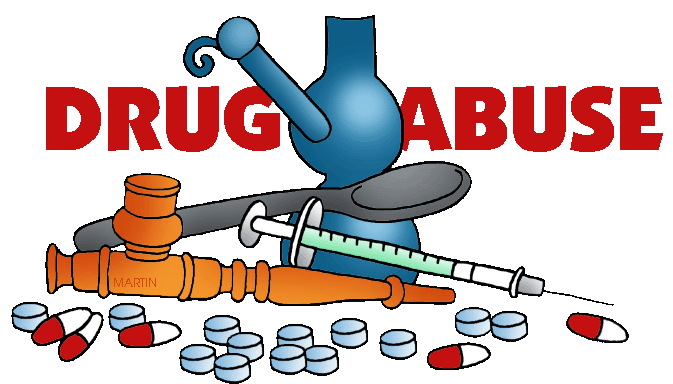In this two-part article, we’re going to explore how to tell if your teen is experimenting with substances and the steps to take to manage this challenging situation.
Why are teens at risk for substance abuse?
First, let’s explore why teens are at high risk for substance abuse. The teenaged brain is wired to encourage risk-taking, courage, discovery, and exploration. A teen’s brain is not fully developed, especially the prefrontal cortex that governs decision-making. The human brain is not fully developed until age 25, which is why so many teens make boneheaded decisions. Adults think with the prefrontal cortex, the brain’s rational part. This is the part of the brain that responds to situations with good judgment and an awareness of long-term consequences. Teens process information with the amygdala. This is the emotional part. In teen’s brains, the connections between the emotional part of the brain and the decision-making center are still developing—and not always at the same rate. That’s why when teens have overwhelming emotional input, they can’t explain later what they were thinking. They weren’t thinking as much as they were feeling.
Additionally, teens have the attitude that nothing bad can, or will, happen to them and that every situation they enter into will work out in their favor.
Quick stats
Let’s review some quick statistics regarding teens and drug use. According to the United States government:
- Almost 50% of high school seniors have abused a drug of some kind.
- By 8th grade 15% of kids have used marijuana.
- 43% of high school seniors have used marijuana.
- 8.6% of 12th graders have used hallucinogens – 4% report on using LSD specifically.
- Over 60% of teens report that drugs of some kind are kept, sold, and used at their school.
- 1 in every 9 high school seniors has tried synthetic marijuana (also known as “Spice” or “K2”).
- 64% of teens say they have used prescription pain killers that they got from a friend or family member.
- 28% of teens know at least 1 person who has tried ecstasy.
- 7.6% of teens use the prescription drug Aderall.
- Over 5% of 12th graders have used cocaine and over 2% have used crack.
- More teenagers die from taking prescription drugs than the use of cocaine AND heroin combined.
Changes associated with substance abuse in teens
Several changes are associated with substance abuse in teenagers. These changes tend to be behavioral, psychological, and physical in nature.
Behavioral Changes
- Increased irritability, including aggressive or violent outbursts
- Other behaviors: defiance, uncooperativeness, hostility
- Ignoring authority figures, rules, and curfews
- Increased associations with law enforcement
- Increased conflicts at school with students and staff
- Poor academic performance
- Decreased motivation and interest in school and hobbies
- Truancy and/or skipping extracurricular activities
- A change in friends or social circles
- Withdrawing from friends and family
- Acting secretive or increased demand for privacy
- Avoiding eye contact
- Finding drugs or paraphernalia in a teen’s room
Psychological Changes
- Mood swings, emotional instability, other changes in personality
- Uncontrollable laughing for no apparent reason
- Loud, obnoxious behavior
- Slurred or rapid speech
- Extreme fearfulness, paranoia
- Lethargy and decreased motivation
- Drowsiness followed by bursts of energy
- Poor concentration and memory problems
- Family history of substance abuse
Physical Changes
- Bloodshot eyes
- Dilated or pinpoint pupils
- Teeth clenching
- Poor hygiene
- Poor appetite and weight loss
- Weight gain
- Unexplained nosebleeds or runny nose
- Sleep disturbances
- Excessive thirst
- Nausea and vomiting
- Shakiness, tremors, sweating
- Headache, stomachache
- Nausea, vomiting, diarrhea, constipation
- Coordination problems
- Seizures
- Frequent unexplained illness
- Accidents, injuries
- Needle track marks, skin infections (intravenous drug use)
- Wearing long sleeves or turtlenecks year round (to cover needle track marks)
- Constant scratching (opiate use)
- Burns on fingers or lips (from smoking marijuana or crack cocaine)
- Decayed teeth, missing teeth (methamphetamine use)
- Smelling like alcohol or drugs
- Smelling like perfume, incense, breath freshener (to mask the smell of alcohol and drugs)
Other Considerations
- Missing cash or other valuable items from the home (that can be pawned for drugs)
- Hidden stashes of alcohol or drugs
- Missing medications, alcohol, tobacco products from the home
- Drug paraphernalia
- Drug residue or remains (seeds, stems, powders, etc)
Parents and teens need to understand that addiction, or substance use disorder as it is called in the medical community, is something that happens in the brain. It’s not about the person’s personality type, character, or intelligence. Everyone is vulnerable to addiction, but the disease does have a genetic component that is passed down in families.
How use leads to abuse
Here’s how substance experimentation and use can lead to abuse:
- Whenever we do anything that feels good, whether it is exercising, achieving a goal, shopping, eating chocolate, having sex, drinking wine, or eating chocolate while drinking wine and having sex (the trifecta), the pleasure center of the brain is activated and dopamine is released into the brain.
- Dopamine is a chemical in the brain that makes us feel good and leaves us wanting more of whatever the thing is that makes us feel good.
- Whether or not something is addictive depends on the speed that it causes dopamine to be released, the intensity of the release, and how reliable that release happens in the presence of the substance or activity.
- Drugs trigger a quick, intense, reliable sense of pleasure. Addictive drugs can release two to ten times the amount of dopamine than other rewards like food or shopping. This is what makes drugs so appealing. And, using drugs takes little effort, unlike exercising or shopping, which also makes them alluring.
- When the brain experiences a surge of dopamine, it becomes overwhelmed and looks for ways to produce less of the chemical. Less dopamine means the highs don’t come as easily, so the person develops a tolerance to the high, but not to the low feeling that comes when drugs’ effects wear off.
- Withdrawal occurs when the high fades and it causes anxiety, agitation, mood swings, and other undesirable symptoms. The person then seeks the high to counteract these feelings, but what they are really doing is creating a deeper and deeper low. Then more of the drug has to be taken to achieve the feel-good effects of dopamine.
Mary Jane
But marijuana is the exception, right? It isn’t addictive is it?
Yes, marijuana is as addictive as any other substance. According to Harvard Medical School, researchers are now realizing that many regular marijuana experience withdrawal symptoms when they stop using marijuana, such as craving, reduced appetite, sleep problems, weight loss, and sometimes anger, aggression, irritability and restlessness. Because of this, they fit the criteria for addiction.
According to Dr. Krista Lisdahl, a director of the brain imaging and neuropsychology lab at the University of Wisconsin-Milwaukee, “Regular cannabis use, which we consider once a week, is not safe and may result in addiction and neurocognitive damage, especially in youth.”
Look for the second part of this article Teens and Substance Abuse, Part 2.

